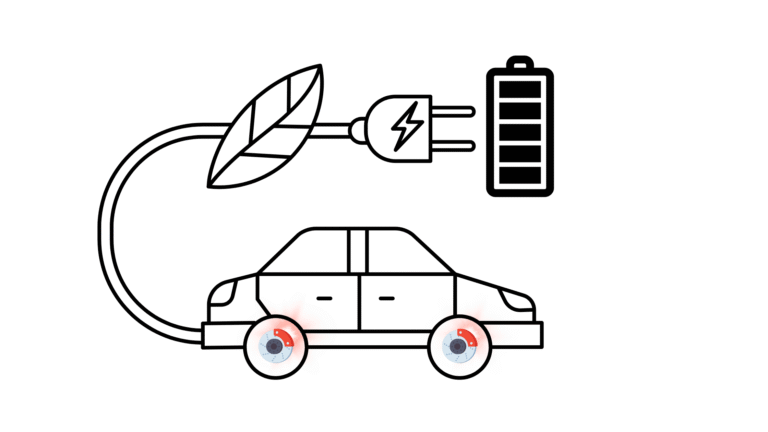Electric vehicles (EVs) are transforming the way Australians drive—not just with zero tailpipe emissions, but also with smarter, more energy-efficient systems. One of the most innovative features of EV technology is regenerative braking. But how does it actually work, and why is it so important for EV performance, efficiency, and sustainability?
In this article, we’ll break down the mechanics of regenerative braking, explore its benefits on Australian roads, and explain how you can make the most of it whether you’re commuting in Sydney or road-tripping through the Outback.
—
Table of Contents
- What Is Regenerative Braking?
- How Regenerative Braking Works in Electric Vehicles
- Key Benefits of Regenerative Braking for Australian Drivers
- EV Models with Regenerative Braking and Adjustable Settings
- Tips for Driving with Regenerative Braking
- FAQs
- Conclusion
—
1. What Is Regenerative Braking?
Regenerative braking—often called “regen braking”—is a system used in electric and hybrid vehicles that captures the energy usually lost during braking and converts it into usable electricity to recharge the battery.
In traditional vehicles, braking produces heat and wastes kinetic energy. In EVs, regenerative braking turns that energy into a useful power source, improving overall efficiency and extending range.
It’s one of the reasons EVs can go farther than expected, especially in urban driving conditions with frequent stops and starts.
—
2. How Regenerative Braking Works in Electric Vehicles
When you press the brake or lift your foot off the accelerator in an EV, regenerative braking activates. Here’s how it works:
- The electric motor reverses function and acts as a generator.
- Instead of consuming electricity to drive the wheels, it converts wheel movement (kinetic energy) into electrical energy.
- That energy is sent back into the battery for reuse.
Depending on the car, regen braking can be light (barely noticeable) or strong enough to slow the vehicle without touching the brake pedal—sometimes called “one-pedal driving.”
Some EVs allow you to choose from different regen levels to suit your driving style and terrain.
—
3. Key Benefits of Regenerative Braking for Australian Drivers
⚡ Improved Energy Efficiency
In cities like Melbourne or Brisbane with stop-start traffic, regen braking recaptures energy every time you slow down—maximising range and reducing battery drain.
🚘 Extended Brake Life
Because you use the mechanical brakes less often, brake pads and discs wear out more slowly—saving on servicing costs and reducing dust pollution.
🌿 Lower Environmental Impact
By reusing energy that would otherwise be wasted, regen braking contributes to more sustainable driving, especially when paired with solar-charged EVs.
🏞️ Perfect for Aussie Terrain
Driving down hills in the Blue Mountains? Regen braking helps control speed and recharge your battery on the way down—great for hilly or regional drives.
—
4. EV Models with Regenerative Braking and Adjustable Settings
Many EVs in Australia come equipped with adjustable regen braking settings:
| Model | Regen Braking Features |
|---|---|
| Tesla Model 3/Y | One-pedal driving with strong regen |
| Hyundai IONIQ 5/6 | Paddle-adjustable regen modes (0 to 3 levels) |
| Kia EV6 | Adjustable via paddles + “i-Pedal” mode |
| Nissan Leaf | e-Pedal system for aggressive regen |
| Polestar 2 | Three regen levels, including one-pedal driving |
| BYD Atto 3 | Light and Standard regen options via touchscreen |
Note: Some entry-level EVs may have lighter regen or non-adjustable systems. Always test drive to find your preferred setting.
—
5. Tips for Driving with Regenerative Braking
✅ Get Comfortable with One-Pedal Driving
Practice modulating your acceleration to coast and slow smoothly. With time, you’ll find yourself rarely using the brake pedal.
✅ Use High Regen in Traffic or City Driving
This is where regen shines. More frequent stops = more energy recovered.
✅ Switch to Low Regen on Highways
On open roads or when using cruise control, low regen offers a smoother ride with fewer speed fluctuations.
✅ Monitor Battery Charge
On steep descents, some EVs limit regen if the battery is nearly full—plan your charge level accordingly.
✅ Check Settings Regularly
Use driving mode presets or regen paddles to adjust settings depending on terrain and personal preference.
—
FAQs
🔋 Does regenerative braking charge my EV’s battery completely?
No. It helps top up your battery and extend range, but it won’t replace full charging.
🚦 Is one-pedal driving safe in traffic?
Yes—many drivers find it safer and more intuitive after a short adjustment period. However, always be ready to use the brake pedal when needed.
⛰️ Can regen braking overcharge the battery?
EVs automatically limit regen if the battery is full or temperatures are too high, so overcharging isn’t a concern.
🛠️ Does regen reduce brake wear significantly?
Yes. Some EV drivers report brake pads lasting over 100,000 km due to reduced mechanical braking.
—
Conclusion
Regenerative braking is a standout feature that makes EVs smarter, more efficient, and better suited to Australia’s diverse driving conditions. From reducing energy waste to extending brake life, it’s a key part of why EVs are the future of driving Down Under.
Whether you’re navigating city streets or descending a steep coastal road, understanding how to use regen braking can make your ride smoother, longer-lasting, and even more sustainable.
⚡ The more you brake, the more you gain.
—
Learn how regenerative braking in EVs works, its benefits for Australian drivers, and how it helps improve range, efficiency, and brake life.
